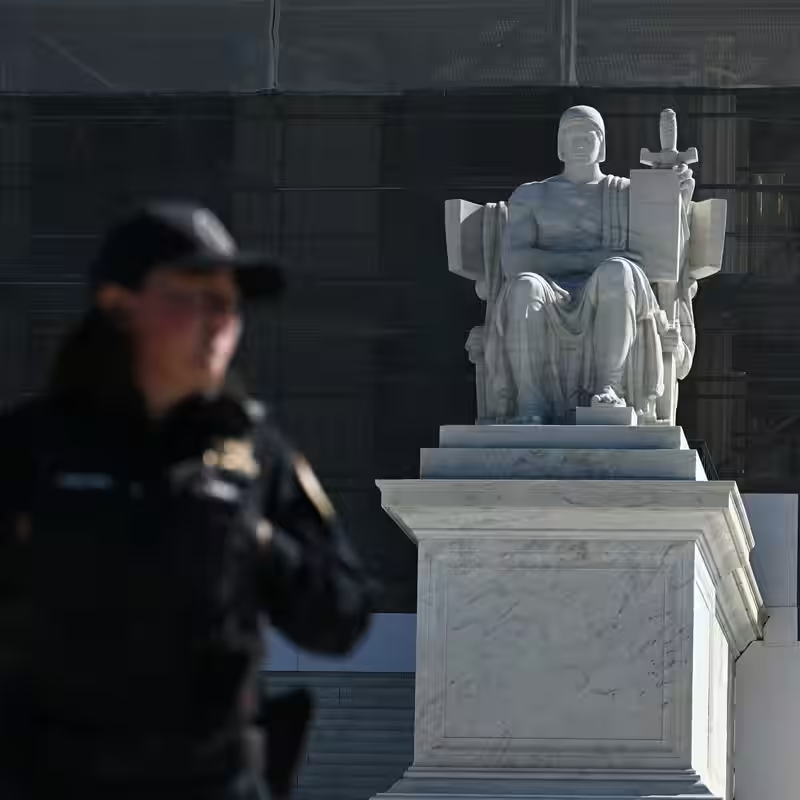The 2026 midterm elections may hinge not just on candidates or campaign cash—but on a ticking clock inside the U.S. Supreme Court. A pending ruling that could strike down a key part of the Voting Rights Act has election experts warning that the timing of the decision might be just as consequential as the outcome itself.
If the Court rules that race can no longer be considered in drawing electoral districts—a move that would effectively gut Section 2 of the Voting Rights Act—states would be legally free to redraw congressional and state legislative maps before the midterms. But whether they actually can depends entirely on when the justices deliver their verdict.
Table of Contents
- What’s at Stake in the Supreme Court Case?
- The Timing Tightrope
- How Redistricting Could Shift Power
- The Purcell Principle: A Legal Speed Bump
- Political Implications for 2026
- Sources
What’s at Stake in the Supreme Court Case?
The case centers on Section 2 of the Voting Rights Act, which prohibits voting practices that result in racial discrimination—including the drawing of electoral maps that dilute minority voting power. For decades, this provision has been used to require states to create or preserve majority-minority districts, especially in the South.
A ruling against Section 2 would not force states to redraw maps—but it would remove a major legal barrier. That opens the door for Republican-led legislatures, already under pressure from the Trump administration to maximize GOP advantage, to redraw lines in ways that could dismantle Black and Latino-majority districts .
The Timing Tightrope
Here’s the catch: most states hold primary elections between February and June 2026. Candidate filing deadlines begin as early as December 2025. If the Supreme Court waits until its usual opinion-release window—June or July 2026—it will be too late to implement new maps for the midterms.
“The calendar is the most significant constraint on this,” said Kareem Crayton, vice president at the Brennan Center for Justice. “The later a decision arrives, the less likely there’s going to be rethinking of existing maps” .
However, the Court has already reheard the case early in its new term—suggesting it may be prepared to rule unusually fast, possibly by December 2025 or January 2026. If so, states like Texas, Georgia, and Louisiana could rush to redraw maps in time for primaries.
How Redistricting Could Shift Power
Eliminating race-based districting wouldn’t just affect Democrats. While majority-Black districts have historically elected Democratic representatives, dismantling them could also destabilize nearby Republican-held seats by scattering minority voters into new districts—potentially making them more competitive.
“Redrawing majority Black districts would most likely involve dispersing those voters across more districts,” The New York Times reports, “potentially endangering Republican incumbents who now represent safe districts” .
The Purcell Principle: A Legal Speed Bump
Even if new maps are drawn quickly, they may face immediate legal challenges. Courts often invoke the Purcell principle—a doctrine from the 2006 case Purcell v. Gonzalez—which discourages last-minute changes to election rules close to voting.
This could block rapid redistricting efforts in states with early primaries, creating a patchwork of old and new maps across the country and sowing confusion among voters and candidates alike.
Political Implications for 2026
With control of the House and Senate hanging in the balance, both parties are watching the Supreme Court closely. Democrats fear a ruling could erase hard-won representation for communities of color. Republicans, meanwhile, are divided: some see an opportunity to lock in gains, while others worry about unintended consequences in swing districts.
One thing is certain: if the Court acts fast, the 2026 midterms could look dramatically different than anyone expected.




